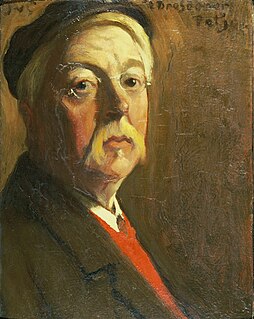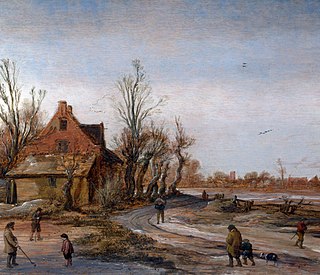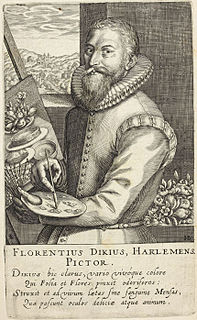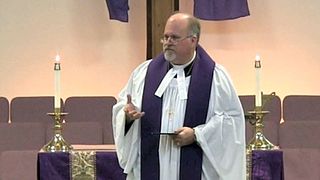
Kiliaen van Rensselaer was a Dutch diamond and pearl merchant from Amsterdam who was one of the founders and directors of the Dutch West India Company, being instrumental in the establishment of New Netherland.

Nicolaes Pieterszoon Berchem was a highly esteemed and prolific Dutch Golden Age painter of pastoral landscapes, populated with mythological or biblical figures, but also of a number of allegories and genre pieces.
It is generally agreed by historians that Jesus and his disciples primarily spoke Aramaic, the common language of Judea in the first century AD, most likely a Galilean dialect distinguishable from that of Jerusalem. The villages of Nazareth and Capernaum in Galilee, where Jesus spent most of his time, were Aramaic-speaking communities. It is also likely that Jesus knew enough Koine Greek to converse with those not native to Palestine, and it is also possible that Jesus knew some Hebrew for religious purposes.

Jacobus (Jac) van Looy was a Dutch painter and writer.

Esaias van de Velde was a Dutch landscape painter.

Godfried Jan Arnold Bomans was a popular Dutch author and television personality and a prominent Dutch Catholic. Much of his work remains untranslated into English.

Joannes "Jan" Kappeyne van de Coppello was a Dutch liberal politician. He was prime minister of the Netherlands between 1877 and 1879.

Floris van Dyck, also called Floris van Dijck or Floris Claesz. van Dyck was a Dutch Golden Age still life painter.
Jacob Willemszoon de Wet or Jacob Willemsz. de Wet the Elder was a Dutch Golden Age painter, whose works were largely influenced by Rembrandt.

The Hofje van Codde en Beresteyn is a hofje in Haarlem, Netherlands. The current building is from 1968 and is located on the J. Cuyperstraat, which is named for the architect who designed the Cathedral of Saint Bavo next door, Joseph Cuypers. This hofje is the wealthiest hofje foundation in Haarlem with the most modern facilities for its inhabitants. Poor (devote) Catholic women of Haarlem 60 years and older are still welcome to live there for free.

Johannes Alberti, was a Dutch theologian.

Theodorus Schrevelius was a Dutch Golden Age writer and poet.

Cornelis Visscher, was a Dutch Golden Age engraver and the brother of Jan de Visscher and Lambert Visscher.

The Stedelijk Gymnasium Haarlem or the Latin School of Haarlem is a secondary school in Haarlem, The Netherlands. The school was founded in 1389 and is therefore one of the oldest schools in the world. The school offers voorbereidend wetenschappelijk onderwijs exclusively and is an independent gymnasium enrolling 822 students and 95 teachers, for a teacher/student ratio of 8.6.

Jan Jansz van de Velde, was a Dutch Golden Age painter.

Jan van de Velde the Elder, was a Dutch calligrapher, writing teacher, and engraver. He was the father of the engraver Jan van de Velde.

Jean de la Chambre, was a Dutch Golden Age engraver and calligrapher best known today for his portrait by Frans Hals, which is in the collection of the National Gallery in London.

Zacharias Heyns was a Netherlands printer and engraver from the Northern Netherlands.





















